力扣刷题-二叉树-二叉树的层序遍历(相关题目总结)
思路
层序遍历一个二叉树。就是从左到右一层一层的去遍历二叉树。这种遍历的方式和我们之前讲过的都不太一样。
需要借用一个辅助数据结构即队列来实现,队列先进先出,符合一层一层遍历的逻辑,而用栈先进后出适合模拟深度优先遍历也就是递归的逻辑。
而这种层序遍历方式就是图论中的广度优先遍历,只不过我们应用在二叉树上。
使用队列实现二叉树广度优先遍历,动画如下:
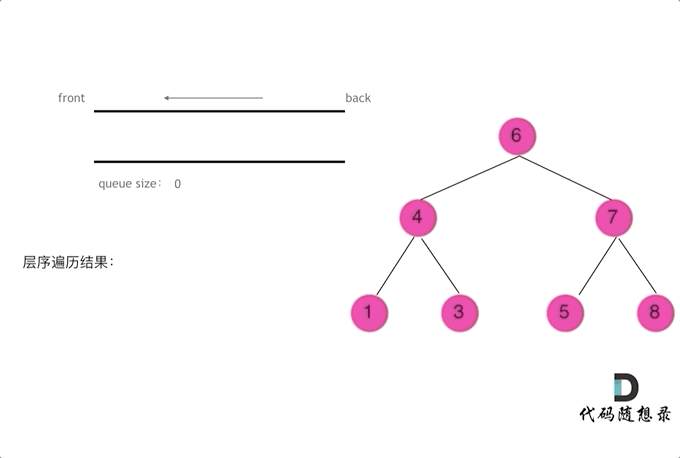
这样就实现了层序从左到右遍历二叉树。
参考:https://www.programmercarl.com/0102.%E4%BA%8C%E5%8F%89%E6%A0%91%E7%9A%84%E5%B1%82%E5%BA%8F%E9%81%8D%E5%8E%86.html
102 层序遍历
给你二叉树的根节点 root ,返回其节点值的 层序遍历 。 (即逐层地,从左到右访问所有节点)。
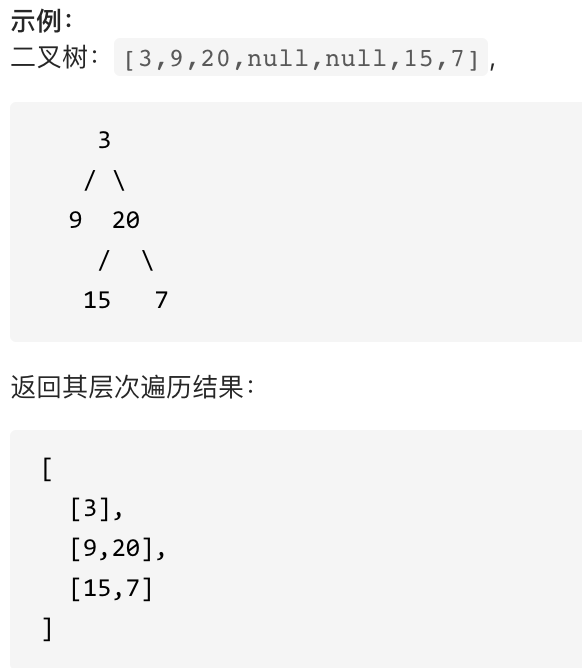
利用长度法
# 注意结果的返回形式是每层作为一个列表
# 法一 长度法from collections import deque
class TreeNode:def __init__(self, val=0, left=None, right=None):self.val = valself.left = leftself.right = rightclass Solution(object):def levelOrder(self, root):""":type root: TreeNode:rtype: List[List[int]]"""# 注意判断是否为空if not root:return []result = [] # 最终结果列表 里面会存储每一层的遍历结果queue = deque([root]) # 采用队列来模拟while queue: # 当queue为空 终止level_result = [] # 每一层结果for _ in range(len(queue)): # queue中记录的是每一层进入队列的元素 所以遍历其长度 来获取元素值cur = queue.popleft()level_result.append(cur.val)if cur.left: # 左孩子 就是第二层了queue.append(cur.left)if cur.right:queue.append(cur.right)result.append(level_result)return result
递归法
每次写递归,都按照这三要素来写,可以保证大家写出正确的递归算法!
确定递归函数的参数和返回值: 确定哪些参数是递归的过程中需要处理的,那么就在递归函数里加上这个参数, 并且还要明确每次递归的返回值是什么进而确定递归函数的返回类型。
确定终止条件: 写完了递归算法, 运行的时候,经常会遇到栈溢出的错误,就是没写终止条件或者终止条件写的不对,操作系统也是用一个栈的结构来保存每一层递归的信息,如果递归没有终止,操作系统的内存栈必然就会溢出。
确定单层递归的逻辑: 确定每一层递归需要处理的信息。在这里也就会重复调用自己来实现递归的过程。
# 法二 递归法
from collections import deque
class TreeNode:def __init__(self, val=0, left=None, right=None):self.val = valself.left = leftself.right = rightclass Solution(object):def levelOrder(self, root):if not root:return []levels = []self.helper(root, 0, levels)return levelsdef helper(self, node, level, levels):if not node:returnif len(levels) == level:levels.append([]) # 每层开始 用[]初始化levels[level].append(node.val)self.helper(node.left, level+1, levels)self.helper(node.right, level+1, levels)
确定递归函数的参数和返回值:当前节点;第几层,结果存储列表
确定终止条件:当当前节点不存在的时候 直接return(终止本次)
确定单层递归的逻辑:
if len(levels) == level:
levels.append([]) # 每层开始 用[]初始化
levels[level].append(node.val)
107. 二叉树的层序遍历 II
给你二叉树的根节点 root ,返回其节点值 自底向上的层序遍历 。 (即按从叶子节点所在层到根节点所在的层,逐层从左向右遍历)
示例 1:
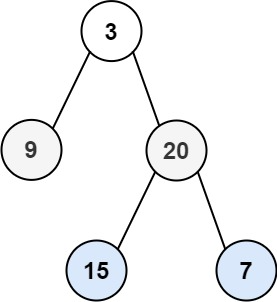
输入:root = [3,9,20,null,null,15,7]
输出:[[15,7],[9,20],[3]]
其实相当于就是上一题结果做一下翻转。
from collections import dequeclass TreeNode(object):def __init__(self, val=0, left=None, right=None):self.val = valself.left = leftself.right = rightclass Solution(object):def levelOrderBottom(self, root):""":type root: TreeNode:rtype: List[List[int]]"""if not root:return []result = []queue = deque([root])while queue:level_result = []for _ in range(len(queue)):cur = queue.popleft()level_result.append(cur.val)if cur.left:queue.append(cur.left)if cur.right:queue.append(cur.right)result.append(level_result)return result[::-1]
199. 二叉树的右视图
给定一个二叉树的 根节点 root,想象自己站在它的右侧,按照从顶部到底部的顺序,返回从右侧所能看到的节点值。
示例 1:

输入: [1,2,3,null,5,null,4]
输出: [1,3,4]
思路:其实就是层序遍历每一层遍历结果的最后一个元素
from collections import deque
class TreeNode(object):def __init__(self, val=0, left=None, right=None):self.val = valself.left = leftself.right = rightclass Solution(object):def rightSideView(self, root):""":type root: TreeNode:rtype: List[int]"""if not root:return []levels = []self.helper(root, 0, levels)result = []for item in levels:result.append(item[len(item)-1])return resultdef helper(self, node, level, levels):if not node:return if len(levels) == level:levels.append([])levels[level].append(node.val)self.helper(node.left, level+1, levels)self.helper(node.right, level+1, levels)
637. 二叉树的层平均值
给定一个非空二叉树的根节点 root , 以数组的形式返回每一层节点的平均值。与实际答案相差 10-5 以内的答案可以被接受。
示例 1:
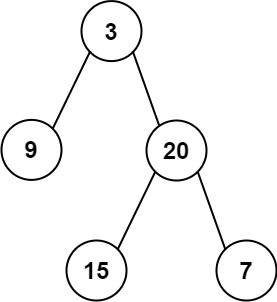
输入:root = [3,9,20,null,null,15,7]
输出:[3.00000,14.50000,11.00000]
解释:第 0 层的平均值为 3,第 1 层的平均值为 14.5,第 2 层的平均值为 11 。
因此返回 [3, 14.5, 11]
思路:就是对每一层结果 取平均 注意需要用float!!!
from collections import dequeclass TreeNode(object):def __init__(self, val=0, left=None, right=None):self.val = valself.left = leftself.right = rightclass Solution(object):def averageOfLevels(self, root):""":type root: TreeNode:rtype: List[float]"""if not root:return []result = []queue = deque([root])while queue:level_result = []for _ in range(len(queue)):cur = queue.popleft()level_result.append(cur.val)if cur.left:queue.append(cur.left)if cur.right:queue.append(cur.right)result.append(level_result)final = [(sum(item)/float(len(item))) for item in result] # 注意要加上float 因为python中 / 是整除return final
429. N 叉树的层序遍历
给定一个 N 叉树,返回其节点值的层序遍历。(即从左到右,逐层遍历)。
树的序列化输入是用层序遍历,每组子节点都由 null 值分隔(参见示例)。
示例 1:
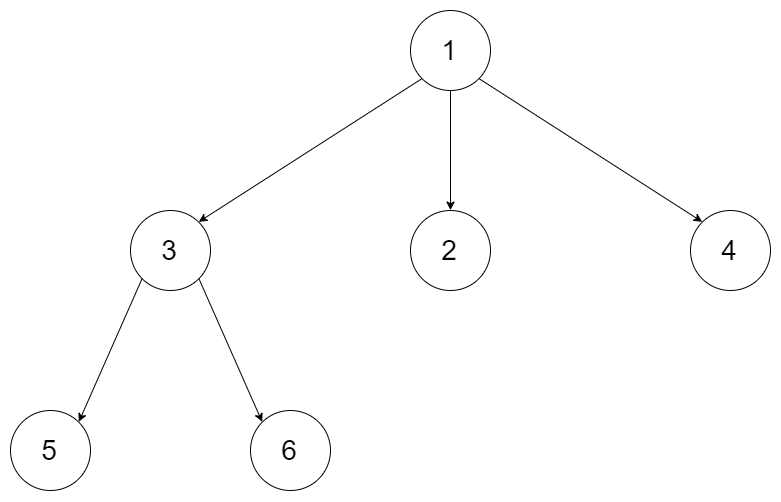
输入:root = [1,null,3,2,4,null,5,6]
输出:[[1],[3,2,4],[5,6]]
思路:N叉树 每个节点存在多个孩子 所以要采用遍历方式
from collections import deque class Node(object):def __init__(self, val=None, children=None):self.val = valself.children = childrenclass Solution(object):def levelOrder(self, root):""":type root: Node:rtype: List[List[int]]"""if not root:return []result = []queue = deque([root])while queue:level_result = []for _ in range(len(queue)):node = queue.popleft()level_result.append(node.val)for child in node.children: # 因为有多个孩子 所以采用遍历方式queue.append(child)result.append(level_result)return result
时间复杂度:O(n),其中 n 是树中包含的节点个数。在广度优先搜索的过程中,我们需要遍历每一个节点恰好一次。
空间复杂度:O(n),即为队列需要使用的空间。在最坏的情况下,树只有两层,且最后一层有 n−1 个节点,此时就需要 O(n) 的空间。
515. 在每个树行中找最大值
给定一棵二叉树的根节点 root ,请找出该二叉树中每一层的最大值。
示例1:

输入: root = [1,3,2,5,3,null,9]
输出: [1,3,9]
思路:就是求每一层遍历结果的最大值
class TreeNode(object):def __init__(self, val=0, left=None, right=None):self.val = valself.left = leftself.right = rightclass Solution(object):def largestValues(self, root):""":type root: TreeNode:rtype: List[int]"""if not root:return []result = []queue = deque([root])while queue:level_result = []for _ in range(len(queue)):cur = queue.popleft()level_result.append(cur.val)if cur.left:queue.append(cur.left)if cur.right:queue.append(cur.right)result.append(level_result)final = [max(item) for item in result] # 求最大return final
(※)116. 填充每个节点的下一个右侧节点指针
给定一个 完美二叉树 ,其所有叶子节点都在同一层,每个父节点都有两个子节点。二叉树定义如下:
struct Node {
int val;
Node *left;
Node *right;
Node *next;
}
填充它的每个 next 指针,让这个指针指向其下一个右侧节点。如果找不到下一个右侧节点,则将 next 指针设置为 NULL。
初始状态下,所有 next 指针都被设置为 NULL。
示例 1:
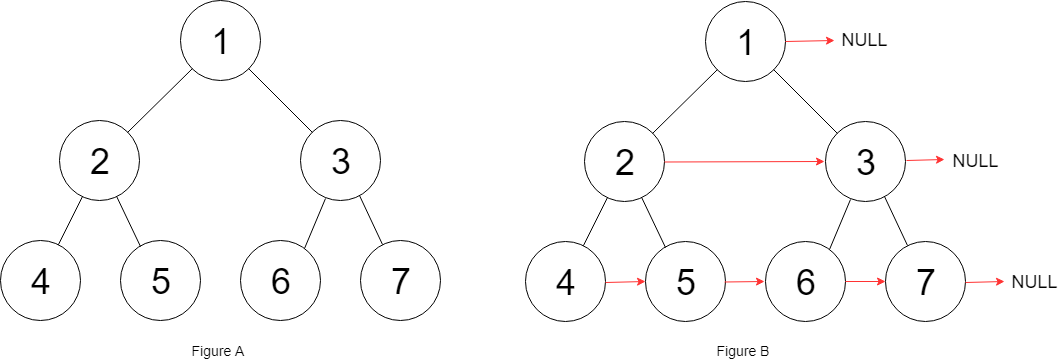
输入:root = [1,2,3,4,5,6,7]
输出:[1,#,2,3,#,4,5,6,7,#]
解释:给定二叉树如图 A 所示,你的函数应该填充它的每个 next 指针,以指向其下一个右侧节点,如图 B 所示。序列化的输出按层序遍历排列,同一层节点由 next 指针连接,‘#’ 标志着每一层的结束。
# # 注意节点定义
class Node(object):def __init__(self, val=0, left=None, right=None, next=None):self.val = valself.left = leftself.right = right self.next = next # 多了一个nextfrom collections import dequeclass Solution:def connect(self, root):if not root:return root # 因为最终返回的是整棵树# 初始化队列同时将第一层节点加入队列中,即根节点Q = collections.deque([root])# 外层的 while 循环迭代的是层数while Q:# 记录当前队列大小size = len(Q)# 遍历这一层的所有节点for i in range(size):# 从队首取出元素node = Q.popleft()# 连接 比较巧妙if i < size - 1: # 题目说了 初始状态下 所有的Next指针都设置为 nullnode.next = Q[0] # 比如2出来 指向队列里面第一个元素 就是3# 拓展下一层节点if node.left:Q.append(node.left)if node.right:Q.append(node.right)# 返回根节点return root117 填充每个节点的下一个右侧节点指针 II
给定一个二叉树:
struct Node {
int val;
Node *left;
Node *right;
Node *next;
}
填充它的每个 next 指针,让这个指针指向其下一个右侧节点。如果找不到下一个右侧节点,则将 next 指针设置为 NULL 。
初始状态下,所有 next 指针都被设置为 NULL 。
示例 1:
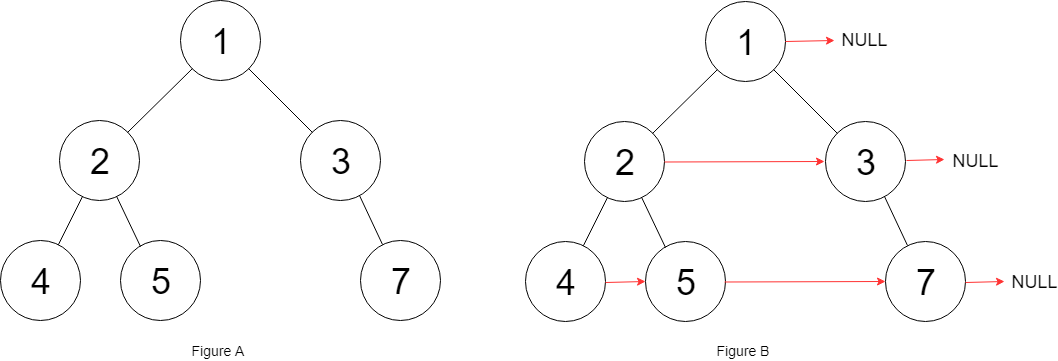
输入:root = [1,2,3,4,5,null,7]
输出:[1,#,2,3,#,4,5,7,#]
解释:给定二叉树如图 A 所示,你的函数应该填充它的每个 next 指针,以指向其下一个右侧节点,如图 B 所示。序列化输出按层序遍历顺序(由 next 指针连接),‘#’ 表示每层的末尾。
思路:其实和上一题是一样,上一题是完美/全二叉树,本题不是,但是是一样的做法。
from collections import dequeclass Node(object):def __init__(self, val=0, left=None, right=None, next=None):self.val = valself.left = leftself.right = rightself.next = nextclass Solution(object):def connect(self, root):""":type root: Node:rtype: Node"""if not root:return rootqueue = deque([root])while queue:size = len(queue)for i in range(size):cur = queue.popleft()if i < size - 1:cur.next = queue[0]if cur.left:queue.append(cur.left)if cur.right:queue.append(cur.right)return root
104. 二叉树的最大深度
给定一个二叉树 root ,返回其最大深度。
二叉树的 最大深度 是指从根节点到最远叶子节点的最长路径上的节点数。
示例 1:
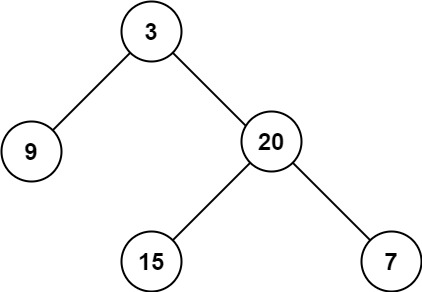
输入:root = [3,9,20,null,null,15,7]
输出:3
思路:按照层序遍历 有多少层(最大深度)即 有多少个嵌套列表
层次遍历
from collections import dequeclass TreeNode(object):def __init__(self, val=0, left=None, right=None):self.val = valself.left = leftself.right = rightclass Solution(object):def maxDepth(self, root):""":type root: TreeNode:rtype: int"""if not root:return 0result = []queue = deque([root])while queue:level_result = []for _ in range(len(queue)):cur = queue.popleft()level_result.append(cur.val)if cur.left:queue.append(cur.left)if cur.right:queue.append(cur.right)result.append(level_result)return len(result) # 里面多少嵌套列表 即为最大深度
递归
递归第一点:参数就是传入树的根节点,返回就返回这棵树的深度,所以返回值为int类型。
递归第二点:如果为空节点的话,就返回0,表示高度为0。
递归第三点:
**先求它的左子树的深度,再求右子树的深度,最后取左右深度最大的数值 再+1 **(加1是因为算上当前中间节点)就是目前节点为根节点的树的深度。(也就是高度)
class solution:def maxdepth(self, root: treenode) -> int:return self.getdepth(root)def getdepth(self, node):if not node:return 0leftdepth = self.getdepth(node.left)rightdepth = self.getdepth(node.right)depth = max(leftdepth, rightdepth) + 1return depth
精简版:
class solution:def maxdepth(self, root: treenode) -> int:if not root:return 0return 1 + max(self.maxdepth(root.left), self.maxdepth(root.right))
559. N 叉树的最大深度
层次遍历
给定一个 N 叉树,找到其最大深度。
最大深度是指从根节点到最远叶子节点的最长路径上的节点总数。
N 叉树输入按层序遍历序列化表示,每组子节点由空值分隔(请参见示例)。
示例 1:
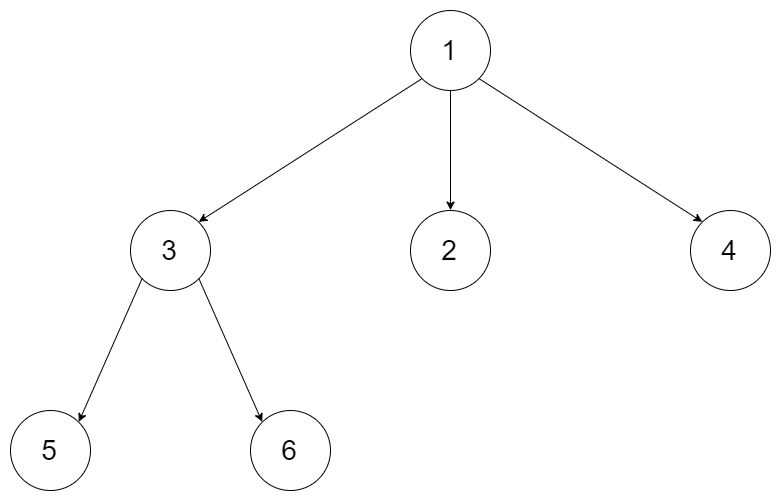
输入:root = [1,null,3,2,4,null,5,6]
输出:3
# Definition for a Node.
class Node(object):def __init__(self, val=None, children=None):self.val = valself.children = childrenfrom collections import deque
class Solution(object):def maxDepth(self, root):""":type root: Node:rtype: int"""if not root:return 0result = []queue = deque([root])while queue:level_result = []for _ in range(len(queue)):cur = queue.popleft()level_result.append(cur.val)for child in cur.children: # 特别之处queue.append(child)result.append(level_result)return len(result)
递归
class Solution:def maxDepth(self, root: 'Node') -> int:if not root:return 0max_depth = 1for child in root.children:max_depth = max(max_depth, self.maxDepth(child) + 1)return max_depth
(※)111. 二叉树的最小深度
给定一个二叉树,找出其最小深度。
最小深度是从根节点到最近叶子节点的最短路径上的节点数量。
说明:叶子节点是指没有子节点的节点。
示例 1:

输入:root = [3,9,20,null,null,15,7]
输出:2
层序遍历法
# 层序遍历法
class Solution(object):def minDepth(self, root):""":type root: TreeNode:rtype: int"""if not root:return 0queue = deque([(root, 1)]) # 每个元素是元组 一个是树元素值 一个是最小深度 比较巧妙while queue:cur, min_depth = queue.popleft()if not cur.left and not cur.right:return min_depthif cur.left:queue.append((cur.left, min_depth+1))if cur.right:queue.append((cur.right, min_depth+1))return 0
时间复杂度:O(N) 因为每个结点会访问一次
空间复杂度:O(N)在层序遍历法中空间复杂度主要取决于队列的开销,队列中的元素个数不会超过树的节点数。
递归法
注意这块和最大深度不一样,如下是错误代码:

这个代码就犯了此图中的误区:
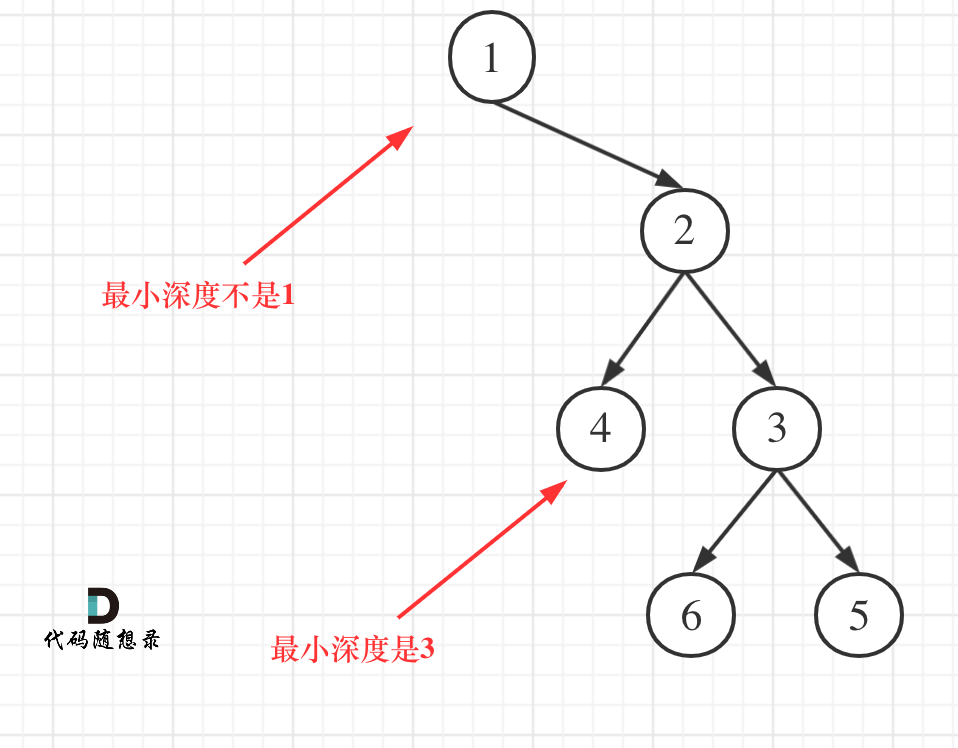
如果这么求的话,没有左孩子的分支会算为最短深度。
所以,如果左子树为空,右子树不为空,说明最小深度是 1 + 右子树的深度。
反之,右子树为空,左子树不为空,最小深度是 1 + 左子树的深度。 最后如果左右子树都不为空,返回左右子树深度最小值 + 1 。
# 递归法
class Solution(object):def minDepth(self, root):""":type root: TreeNode:rtype: int"""return self.getDepth(root)def getDepth(self, node):if node is None:return 0leftDepth = self.getDepth(node.left) # 左rightDepth = self.getDepth(node.right) # 右# 当一个左子树为空,右不为空,这时并不是最低点if node.left is None and node.right is not None:return 1 + rightDepth# 当一个右子树为空,左不为空,这时并不是最低点if node.left is not None and node.right is None:return 1 + leftDepthresult = 1 + min(leftDepth, rightDepth)return result
时间复杂度:O(N),其中 N 是树的节点数。对每个节点访问一次。
空间复杂度:O(N)/O(H) 其中 H 是树的高度。空间复杂度主要取决于递归时栈空间的开销,最坏情况下,树呈现链状,空间复杂度为 O(N)。平均情况下树的高度与节点数的对数正相关,空间复杂度为 O(logN)
